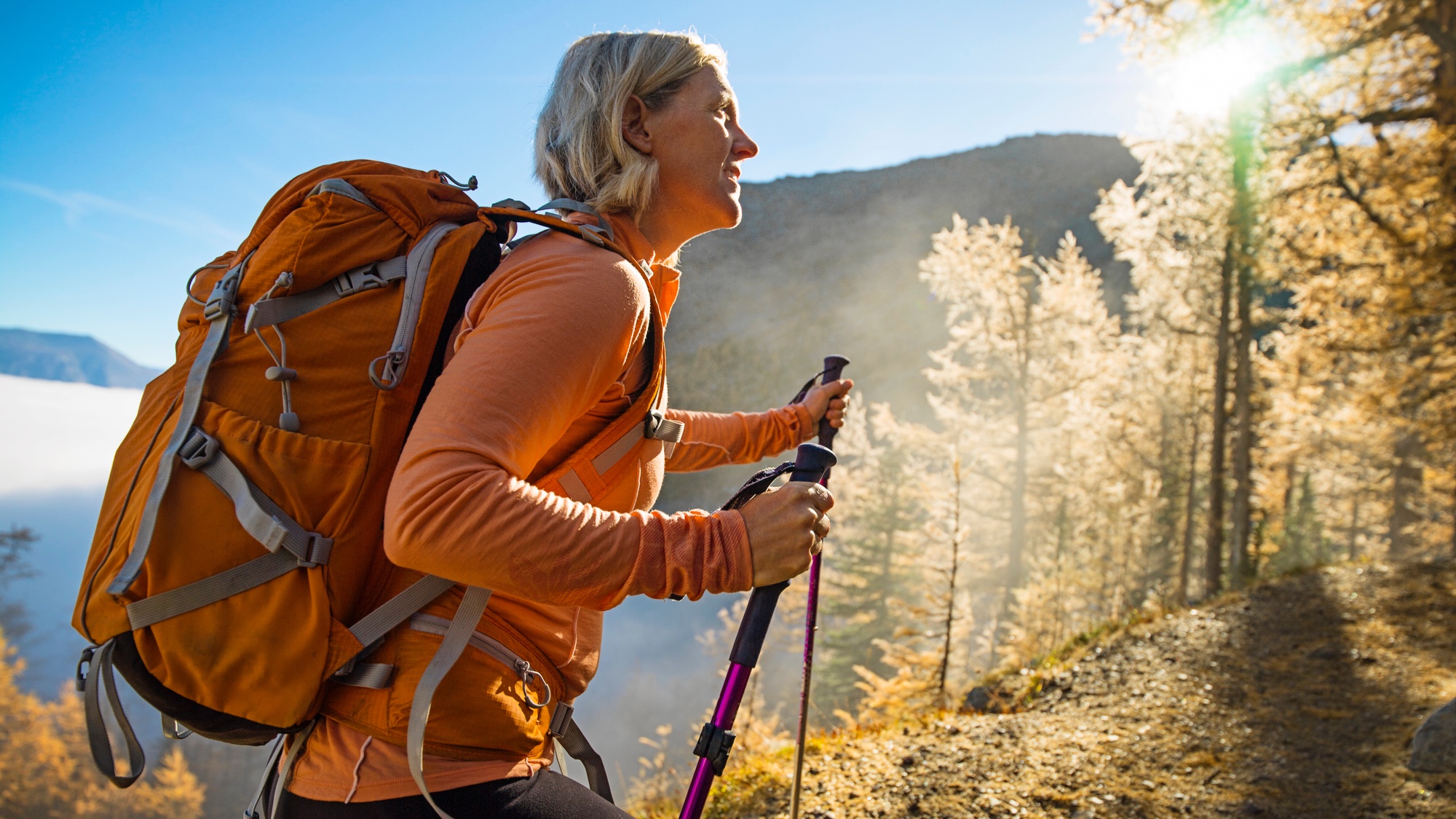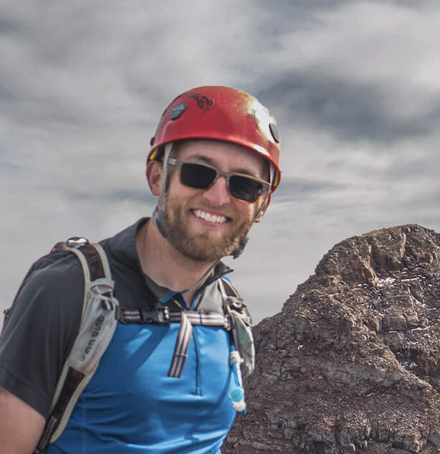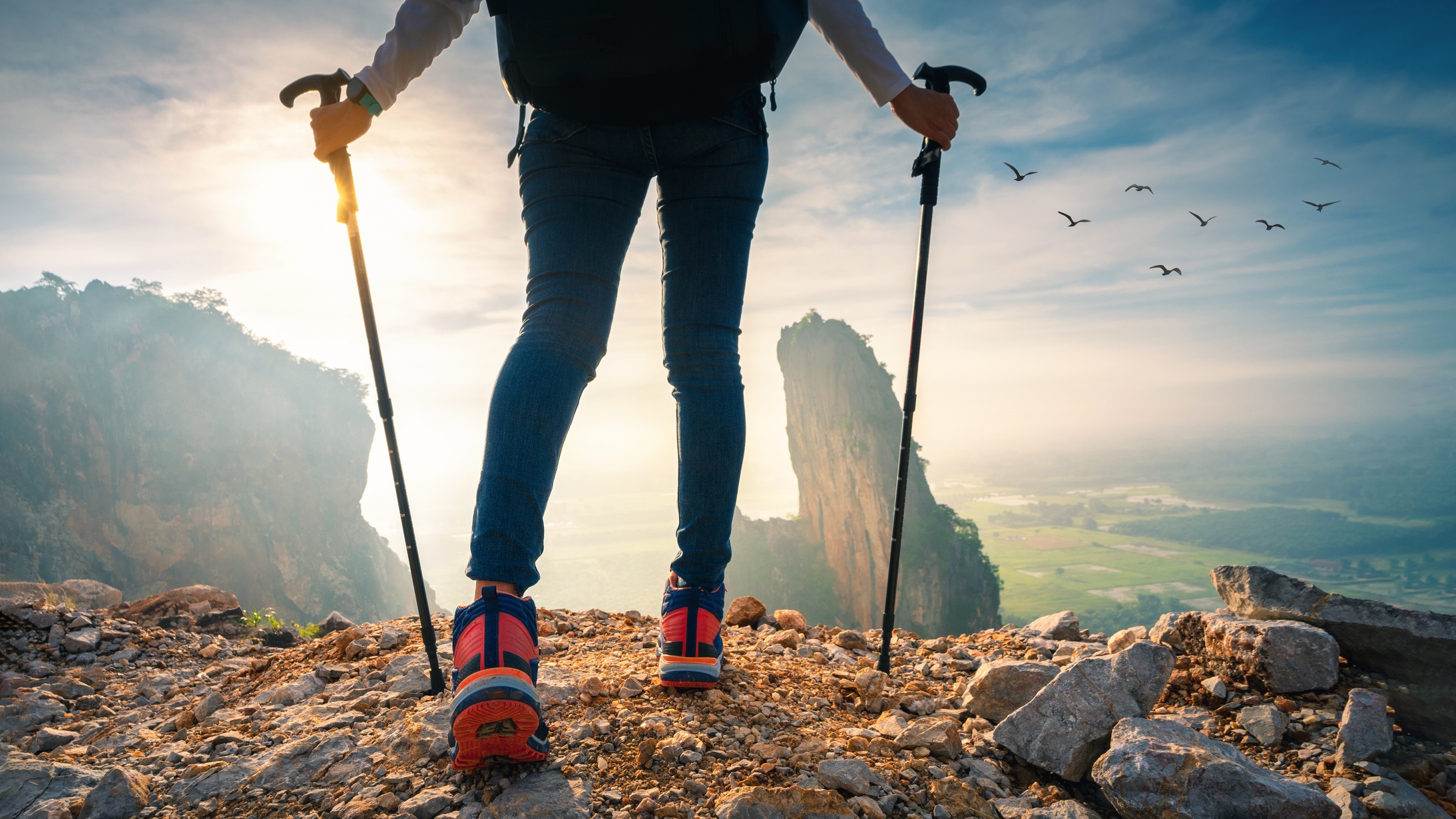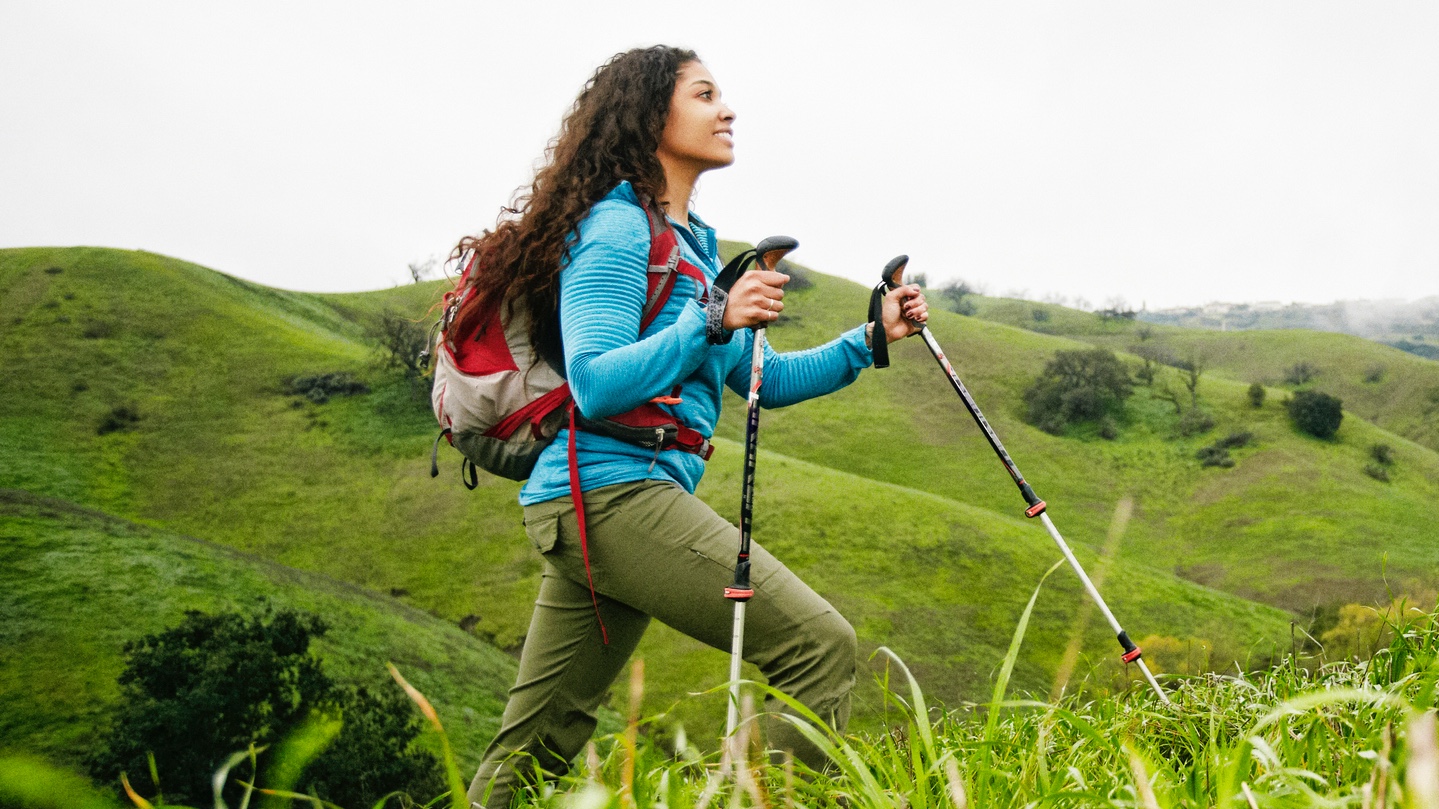How to use hiking poles
Knowing how to use hiking poles can increase your steadiness and walking speed


If you hike, learning how to use hiking poles can be advantageous. The best trekking poles can take some weight off your knees, steady your steps and even up your walking speed.
In fact, a study published in the journal Wilderness and Environmental Medicine showed hiking poles can decrease lower limb loading while increasing cardiovascular demand. They can also better your balance.
Hiking poles don’t come in one simple size, shape and make, though. “Poles typically come in three styles: single-piece full-length poles (similar to most ski poles), telescoping poles, or folding poles,” says Wesley Trimble from the American Hiking Society.
“The telescoping and folding poles are great if you don't want to use them all the time so that you can stash them in your pack. Single-piece poles can be cumbersome to transport and store, but they tend to be both lighter and sturdier than adjustable poles.” Let’s take a look at why you might want to buy a hiking pole.

Outside Magazine called Wesley Trimble "the most inspiring man on the Pacific Crest Trail" after completing the 2,600-mile trail despite his mild form of cerebral palsy. He has thru-hiked the Colorado Trail, climbed all 54 of Colorado's 14,000-foot peaks, and finished several ultramarathon trail races — traversing well over 10,000 miles of trail. While earning a Bachelors in Environmental Design from the University of Colorado, Wesley also spent four seasons building and maintaining trails with Rocky Mountain Youth Corps.
When to use hiking poles
Using hiking poles requires you to learn special techniques but, like with most pieces of exercise equipment, you’ll soon wonder how you ever lived without them.
“Most commonly, hikers use poles in alternating pole and foot strikes so the left pole is planted simultaneously when the right foot strikes the ground,” Trimble says.
“When ascending steeper terrain some folks prefer to use both poles simultaneously to provide more support and strength to lift their body with a steep step.”
Get the Fit&Well Newsletter
Start your week with achievable workout ideas, health tips and wellbeing advice in your inbox.

What height should hiking poles be?
It’s important to choose an appropriately sized hiking pole. “A general rule of thumb is that, when a person is standing straight and holding the trekking pole grip, the elbow should make about a 90-degree angle, and the forearm should be parallel to the ground,” Trimble says.
Some hikers might prefer longer poles, though. “For example, a specific model of an adjustable pole might be 100 to 125 cm and 120 to 140 cm,” Trimble adds. “If someone is in the middle of the size ranges, then it's a good idea to size up.”
How do you use hiking poles uphill?
Trekking uphill requires a different hiking pole technique compared to when you're walking on level ground. For example, if you've gone from walking on a flat surface to tackling a steep incline, you might find that your hiking poles are now too long to use comfortably.
So the first point to take into consideration when using hiking poles uphill? "With steep terrain, hikers may find it beneficial to shorten their poles a few centimeters or lower their hands on the grip," Trimble says.
According to Trimble, this is a technique that will help to promote better posture going uphill. "Hikers tend to slouch forward while going up steep grades," he explains. "So trekking poles can help people stay more upright, which will also help keep their airways more open."
Hiking helps to build muscle — especially in your lower body and even more so when you're walking uphill. So when going up a steep incline, switch up your technique and use your arms and upper body to help propel yourself forward.
"With steeper inclines, hikers can use their arms and upper body to assist fatigued legs by planting the poles about the same distance in front of the body as the ball of the foot when the front foot strikes the ground," Trimble says.
"When the pace slows on very steep hills, some hikers will use both poles and plant them in unison with every forward step to allow both arms to help pull and lift up instead of using the right arm to support just the left foot and the left arm to support the right foot."
But remember: the farther the poles are in front of you/or out to the sides of the body, the less support and stability they will provide. "When the hiker's stride shortens, it's helpful to shorten the trekking placement and vice versa," Trimble adds.
Is it better to hike with one pole or two?
Choosing to use one or two hiking poles is a personal preference, and, according to Trimble, there are a few trade-offs. "Using two poles requires a little more coordination, increasing the chance of getting tripped up by a pole, especially when moving quickly," he says.
However, "Two poles provide four points of contact with the ground and more symmetrical support. When I first used poles, I used a single pole, but when I started using two, I realized two poles greatly reduced knee discomfort when descending steeper terrain."
"[This is] because my upper body was assisting in supporting my weight with each step instead of every other step with a single pole or staff."
What to look for when buying hiking poles
If you’re a hiking newbie, don't worry! You’ll be pleased to know that you don’t have to spend a fortune to reap the rewards these pieces of walking equipment can bring.
“I've used numerous types of poles over the years, and in most cases, for most hikes, basic trekking poles are adequate,” Trimble tells us. But there are a few features to look out for.
“Many early versions of adjustable (and cheaper new) poles use a twist lock mechanism that often slips if more weight is applied to the pole, especially if the poles are cold and wet,” Trimble adds. “If I use an adjustable pole, I always use poles with a flip lock mechanism instead of the twist lock.”
Also consider:
- The weight of the pole: heavier poles can be more durable, but they’ll also be heavier to move.
- The material they are made from: usually, most poles are crafted from aluminum, but you can get super-light carbon fiber options too.
- Whether your pole can be adjusted: being able to lengthen your poles by around four inches can be handy when going downhill, as it means you can add some extra stability to your descent.
- Whether it comes with a basket: positioned near the tip, the basket helps keep the pole from sinking into soft surfaces and holes.

Are hiking poles worth it?
As we’ve seen, there are many reasons why you might use a hiking pole. Research published in the journal Wilderness and Environmental Medicine tells us that hiking poles can:
- Protect your knees and lower limbs from the added pressure placed on them when walking over uneven terrain.
- Make walking up steep gradients easier, while acting as a sturdy base when descending.
- Increase cardiovascular demand. In fact, another study published in the Journal of Strength and Conditioning Research found trekking poles showed energy production increased during exercise without increased perceptions of effort.
“Additionally, trekking poles are particularly helpful for creek and river crossings by providing extra contact with the ground,” Trimble adds. “They can also help provide a sense of stability when crossing any unstable terrain, such as snow and loose talus. I use them when I'm on steep terrain or carrying more than a light daypack.”
Because of this stabilizing effect, hiking poles help you avoid injury. But it's also essential to read up on how to stay safe when hiking before heading out. Plus, it's a good idea to get wrapped up in hiking clothes to keep you warm and dry.
Becks is a freelance journalist and writer with more than 7 years of experience in the field. She writes health and lifestyle content for a range of titles including Live Science, Top Ten Reviews, Tom’s Guide, Stylist, The Independent, and more. She also ghostwrites for a number of Physiotherapists and Osteopaths.
Health has been a big part of Becks’ lifestyle since time began. When she’s not writing about the topic of health, she’s in the gym learning new compound exercises. And when she’s not in the gym, she’s most probably reading.